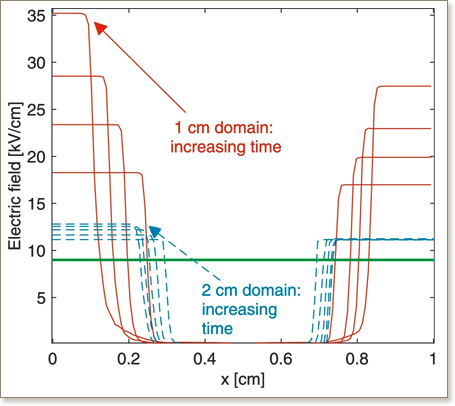


The opportunity for ignition assistance by a pulsed applied voltage is investigated in a canonical one-dimensional configuration. An incipient ignition kernel, formed by localized energy deposition into a lean mixture of methane and air at atmospheric pressure, is subjected to sub-breakdown electric fields (E/N ≈ 100 Td) by a DC potential applied across the domain, resulting in non-thermal behavior of the plasma formed during the discharge. A two-fluid approach is employed to couple thermal neutrals and ions to the non-thermal electrons. A two-temperature plasma mechanism describing gas phase combustion, excitation of neutral species, and high-energy electron kinetics is employed to account for non-thermal effects. Charged species transported from the ignition zone drift rapidly through the domain, augmenting the magnitude of the electric field in the fresh gas during the pulse through a dynamic-electrode effect, which results in an increase in the energy of the electrons in the fresh mixture with increasing time. Enhanced fuel and oxidizer decomposition due to electron impact dissociation and interaction with excited neutrals generate a pool of radicals, mostly O and H, in the fresh gas ahead of the flame’s preheat zone. In the configuration considered, the effect of the nanosecond pulse is to increase the mass of fuel burned at equivalent times relative to the unsupported ignition through enhanced radical generation, resulting in an increased heat release rate in the immediate aftermath of the pulse.